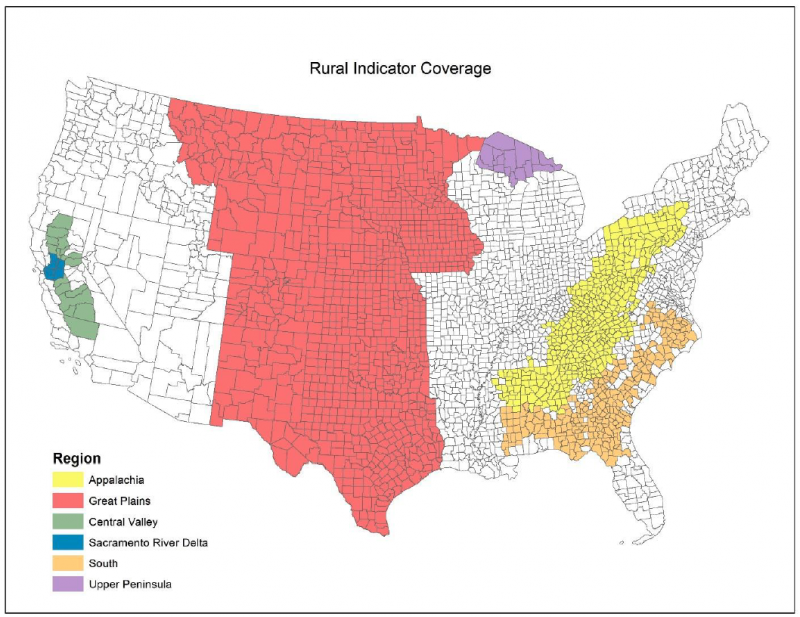The blog highlights and summarizes a policy brief written by Catherine Brinkley, an associate professor of Human Ecology and Director of the Center for Regional Change at UC Davis, and M. Anne Visser, associate professor and Program Director of Community and Regional Development at UC Davis. You can access the full policy brief here.
Because of large acreages, sparse populations, and distinct sociopolitical dynamics, many rural communities are beginning to assemble their own sets of economic indicators to fit unique policy agendas. In a recent paper, Catherine Brinkley and M. Ann Visser reviewed over 30 years of practical efforts from six regions that created economic development reports.
Main Findings
- Rural indicator reports have emerged as a central tool in the design of rural economic development policy.
- Expanding these reports beyond the straightforward assessment of financial capitaling is essential to refining our interpretation of rural wealth.
- Centering community voices and stories in report formation is crucial to achieving more equitable policy outcomes.
The review led Brinkley and Visser to identify the best-practice approaches to the creation of rural economic indicator reports, especially where data can be tailored precisely to rural areas. It also cemented their belief in the importance of centering community voices and stories in the pursuit of more equitable policy outcomes.
The researchers found that policy objectives differ between urban and rural areas. While policy objectives for urban stakeholders often focus on population growth, many rural areas prioritize land preservation over development to increase agricultural economic vitality and bolster visitorship to natural and scenic areas.
Reviewing rural indicators reports
In their study, Brinkley and Visser used a content-analysis approach to review 17 rural indicator reports covering regions including the Central Valley of California, the Southern Black Belt, Appalachia, the Great Plains, and others. All reports were created on behalf of regional development commissions by academic researchers with input from policymakers and community stakeholders.
The regional indicator reports organized their findings according to different ‘capitals.’ These were human; education; health; cultural and socio-political; built environment; financial; and natural.

Center more community voices for more equitable outcomes
It is important for rural indicators reports to expand their assessment beyond financial capital to benchmark their regions’ other capitals, such as human and cultural. This is useful because communities depend on investment from a broad range of capital assets to generate rural wealth.
To better inform rural economic development, it would help if rural indicators could be spatially distinct from nearby urban areas. This would allow regions to isolate rural development policies and trends from those of the urban areas embedded within the regional landscape. Increased federal, regional and local attention can alter rural futures and support growth in capacity for rural planning. Finally, we believe that centering community voices and stories in report formation is crucial to achieving more equitable policy outcomes.
